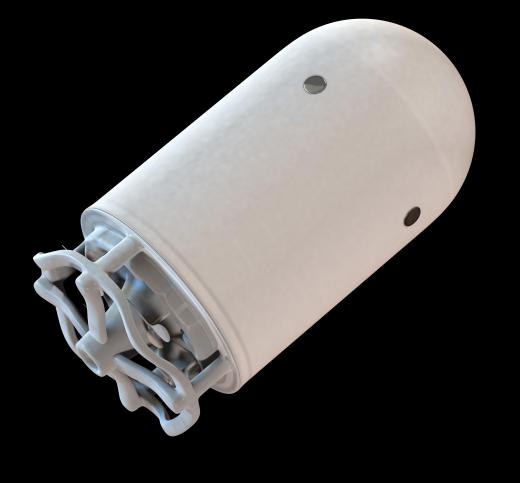What is Nanotechnology?
 Michael Anissimov
Michael Anissimov
Nanotechnology is the scientific, theoretical, and engineering disciplines associated with technological constructs whose dimensions are measured in nanometers, or billionths of a meter. An example would be the study and application of carbon nanotubes, tiny tubes of carbon a few nanometers (approximately 1/50,000th of the width of a human hair) long, with lengths ranging from a few tens of nanometers to a few millimeters. Carbon nanotubes are the strongest and stiffest material yet discovered on Earth, 500 times stronger and ten times lighter than steel.
To appreciate the value of nanotechnology, one must realize that practically all technology in the history of civilization has been constructed in complete ignorance of its nanoscale properties. However, these properties have a huge influence on the bulk characteristics of a material at the macroscale. For instance, modern metallic armors generally have trillions of tiny nanoscale holes and deformations in them, due to the imprecision of the manufacturing process. In aggregate, these tiny holes appreciably decrease the strength of the material, making it easier to be penetrated by a bullet or blast. If the armor were manufactured with nanoscale precision, it could be made several times more effective. Studying such properties falls under the domain of nanotechnology.

Besides working at how to make bulk materials stronger or more useful, nanotechnology also focuses on tiny machines or structures. For instance, the transistors in the computer you are using right now are likely less than 50 nanometers apart from each other, designed to maximize their available space. In the near future, circuit designs will begin to push up against the limits of miniaturization using the current paradigm, forcing a switch to some other approach. Scientists in nanotechnology are studying exactly that, and billions of dollars are poured into the field every year.

The ultimate goal of nanotechnology is precise control of the structure of matter. With the ultimate nanotechnological manufacturing device, one could convert dirt into fine steaks, using networks of nanoscale manipulators that rearrange the carbon molecules in the suitable pattern. The atoms in both are the same -- a lot of carbon -- merely their arrangement is different. Advanced nanotechnology might allow us to construct nanoscale medical devices that swim through our arteries, removing plaque and repairing tissue damage. Such machines might one day allow us to live indefinitely, simply by repairing the damage caused by aging before it has the chance to accumulate and become fatal.
AS FEATURED ON:
AS FEATURED ON:













Discussion Comments
@ GiraffeEars- I would have to agree and disagree with you. While I like the ideological premise behind your statements, I have to disagree with the practical premise of them. If you did not allow grants and subsidies for research into cures and for profit organizations, you would actually hinder the growth of the field of biological nanotechnology. You would also create a competitive disadvantage for this country, and you would end up sending valuable high paying jobs overseas. Case in point, Stem Cell Research and the billions of dollars the American Economy loses since the industry has practically moved overseas. Often times, ideology and practicality just clash.
@ Sinefey- While those may be some noble causes for biomedical nanotechnology, I would like to see public funding for nanotechnology go towards finding a vaccine for Aids, cleaning water, or preventing cancer in the first place. I believe that too much focus is put on short-term problems and solutions, rather than addressing the causes of disease and the long-term effects of a disease on society. While curing cancer, fixing birth defects, and enabling quadriplegics the ability to move again would be great, research into these areas should come from the private sector.
These treatments will only be beneficial to those who can afford to pay for them, and with such an expensive technology, that may not be many. There is already a big problem with the poor and lower classes not being able to afford treatments for things like cancer and aids, so any public funding from taxpayer dollars should go towards nonprofit research that looks to prevent these diseases. Just my opinion.
The medical possibilities of nanotechnology are amazing. Perhaps curing cancer, repairing birth defects or even enabling quadriplegics to move again!
Let's hope that Medical Nanotechnology gets the research it deserves and is fruitful!
Post your comments